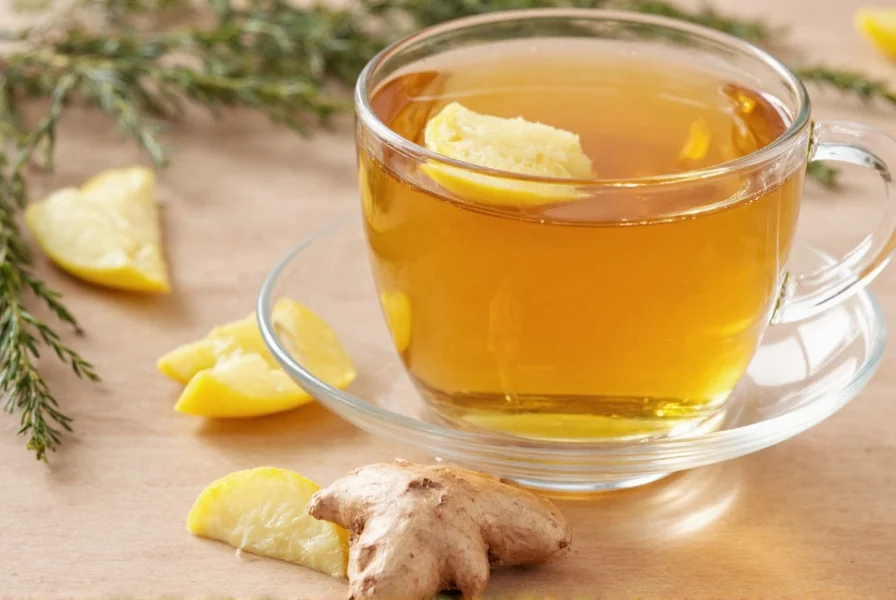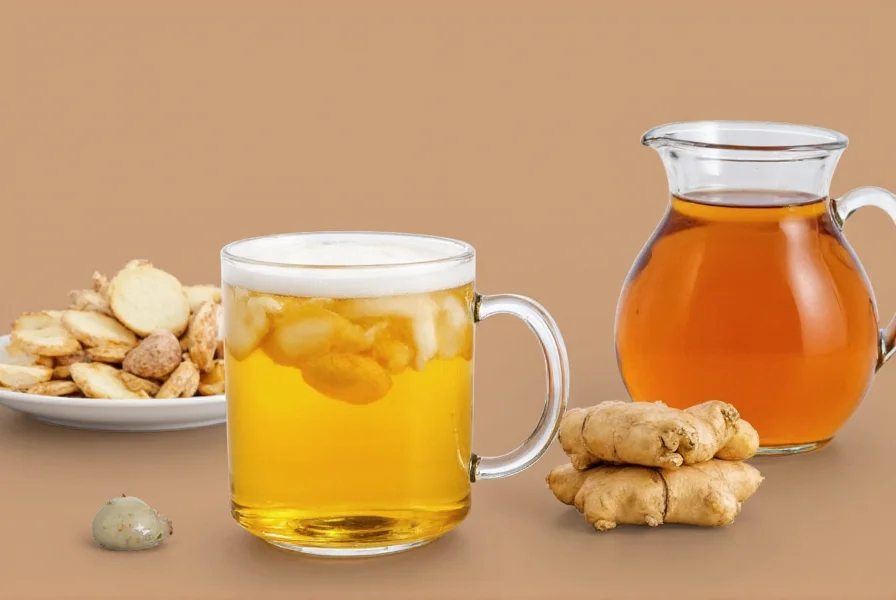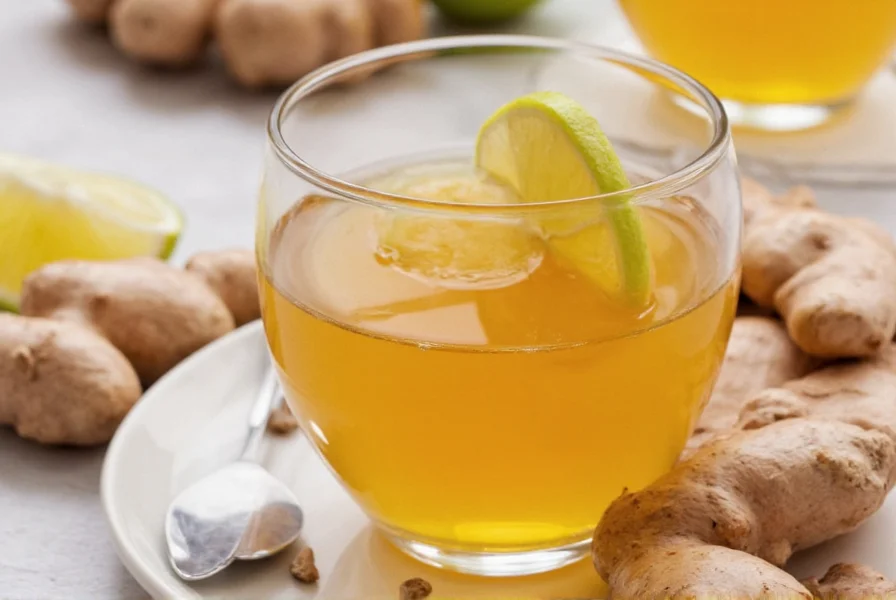For centuries, ginger tea has been cherished across cultures for its distinctive spicy-sweet flavor and potential wellness benefits. Whether you're seeking relief from occasional digestive discomfort, looking to boost your immune system during cold season, or simply want a caffeine-free beverage alternative, mastering the art of ginger tea preparation delivers remarkable results. The key to exceptional ginger tea lies not just in the ingredients but in the precise preparation method that extracts maximum flavor and beneficial compounds from the ginger root.
Essential Ingredients for Perfect Ginger Tea
Creating an authentic ginger tea starts with selecting quality ingredients. While fresh ginger root forms the foundation, complementary elements enhance both flavor and potential health properties.
| Ingredient | Quantity | Quality Considerations |
|---|---|---|
| Fresh ginger root | 1-2 inches | Firm, smooth skin with minimal wrinkles indicates freshness |
| Filtered water | 2 cups | Spring or filtered water enhances flavor clarity |
| Lemon | 1/2, sliced | Freshly squeezed provides brighter flavor than bottled |
| Honey or maple syrup | To taste | Raw honey preserves beneficial enzymes |
For those exploring fresh ginger tea recipe variations, consider adding complementary ingredients like mint leaves for digestion, turmeric for enhanced anti-inflammatory properties, or cinnamon for blood sugar support. The quality of your ginger dramatically affects the final product—choose roots that feel heavy for their size with taut, unwrinkled skin.
Equipment You'll Need
While specialized equipment isn't necessary for how to brew ginger tea properly, having the right tools ensures consistent results:
- Small saucepan with lid
- Vegetable peeler or spoon (for ginger skin removal)
- Sharp knife and cutting board
- Fine mesh strainer
- Mug or teapot for serving

Step-by-Step Ginger Tea Preparation
Follow these precise steps for the best ginger for tea preparation that maximizes both flavor and potential health benefits:
- Prepare the ginger: Use a spoon to gently scrape off the thin skin—this preserves more of the flavorful outer layer compared to peeling. Slice ginger into thin rounds (about 1/8 inch thick) or mince finely for stronger tea.
- Boil the water: Combine 2 cups of filtered water in a small saucepan and bring to a rolling boil over medium-high heat.
- Add ginger: Once boiling, add prepared ginger slices. Reduce heat to maintain a gentle simmer—vigorous boiling can make the tea bitter.
- Simmer properly: For mild tea: 5-7 minutes. For medium strength: 10-12 minutes. For strong, medicinal-grade tea: 15-20 minutes. The longer you simmer, the more gingerols (active compounds) extract into the water.
- Strain and enhance: Remove from heat and strain into your cup. Add 1/2 lemon slice and 1-2 teaspoons of raw honey while the tea is still hot to preserve honey's beneficial properties.
Timing precision represents one of the most critical aspects of how to make strong ginger tea without bitterness. Many beginners make the mistake of boiling ginger too vigorously or for too long, resulting in an unpleasantly sharp flavor. The ideal ginger tea should have a warm, spicy-sweet profile with subtle citrus notes.
Popular Variations and Customizations
Once you've mastered the traditional ginger tea preparation method, experiment with these science-backed variations:
- Immune-Boosting Blend: Add 1/4 teaspoon turmeric and a pinch of black pepper during the last 5 minutes of simmering. The piperine in black pepper enhances curcumin absorption.
- Digestion-Friendly Tea: Include 5-6 fresh mint leaves during the last 3 minutes of steeping. Mint contains menthol, which may help relax digestive tract muscles.
- Cold-Fighting Elixir: Add 1 sliced garlic clove during the first minute of boiling. Garlic contains allicin, which may support immune function.
- Anti-Inflammatory Powerhouse: Combine equal parts ginger and turmeric root for enhanced anti-inflammatory effects.

Serving and Storage Guidelines
For optimal flavor and potential benefits, consume ginger tea immediately after preparation. However, you can refrigerate cooled tea in an airtight container for up to 3 days. When reheating, avoid boiling as this degrades delicate compounds. The how long to steep ginger tea question depends on your purpose—shorter steeps create milder, more beverage-like tea, while longer steeps yield stronger, more medicinal preparations.
For the simple ginger tea for digestion, consume 15-20 minutes before meals. If using ginger tea for occasional nausea relief, sip slowly throughout the day rather than consuming large quantities at once.
Science-Backed Benefits of Ginger Tea
While ginger tea shouldn't replace medical treatment, research suggests potential benefits from regular consumption. Ginger contains gingerols and shogaols—bioactive compounds with antioxidant and anti-inflammatory properties. Studies indicate ginger may support digestive health by accelerating gastric emptying and reducing nausea. The warming nature of ginger tea can also promote circulation and provide comfort during cold weather.
Unlike many herbal remedies, ginger has substantial scientific backing. A comprehensive review published in the International Journal of Preventive Medicine confirmed ginger's effectiveness for nausea relief, particularly for pregnancy-related and chemotherapy-induced nausea. However, always consult your healthcare provider before using ginger tea for specific health concerns, especially if you take blood-thinning medications.
Frequently Asked Questions
How much ginger should I use for one cup of tea?
For a single serving, use 1/2 to 1 inch of fresh ginger root per cup of water. Adjust based on your preference for strength—more ginger creates a stronger, spicier tea. When learning how to make the ginger tea properly, start with 1/2 inch and gradually increase to find your ideal balance.
Can I reuse ginger for multiple tea batches?
Yes, you can typically reuse ginger root for 2-3 batches of tea. After the first brew, store the used ginger in the refrigerator. Each subsequent batch will be milder than the previous one. This practice represents an economical approach to fresh ginger root tea instructions while reducing waste.
When is the best time to drink ginger tea?
Ginger tea can be enjoyed at any time, but timing affects its benefits. For digestion support, drink 15-20 minutes before meals. For morning nausea relief, consume shortly after waking. Avoid drinking strong ginger tea close to bedtime as its stimulating properties might interfere with sleep for some individuals.
Does ginger tea contain caffeine?
No, authentic ginger tea made from ginger root contains zero caffeine. This makes it an excellent alternative to traditional black or green teas for those sensitive to caffeine or seeking a nighttime beverage. The natural spiciness provides gentle stimulation without caffeine's potential side effects.
How long does homemade ginger tea stay fresh?
Refrigerated ginger tea maintains optimal flavor and potential benefits for 2-3 days when stored in an airtight container. For longer storage, freeze in ice cube trays then transfer to freezer bags—frozen ginger tea cubes can be stored for up to 3 months. Always reheat gently without boiling to preserve beneficial compounds.











 浙公网安备
33010002000092号
浙公网安备
33010002000092号 浙B2-20120091-4
浙B2-20120091-4